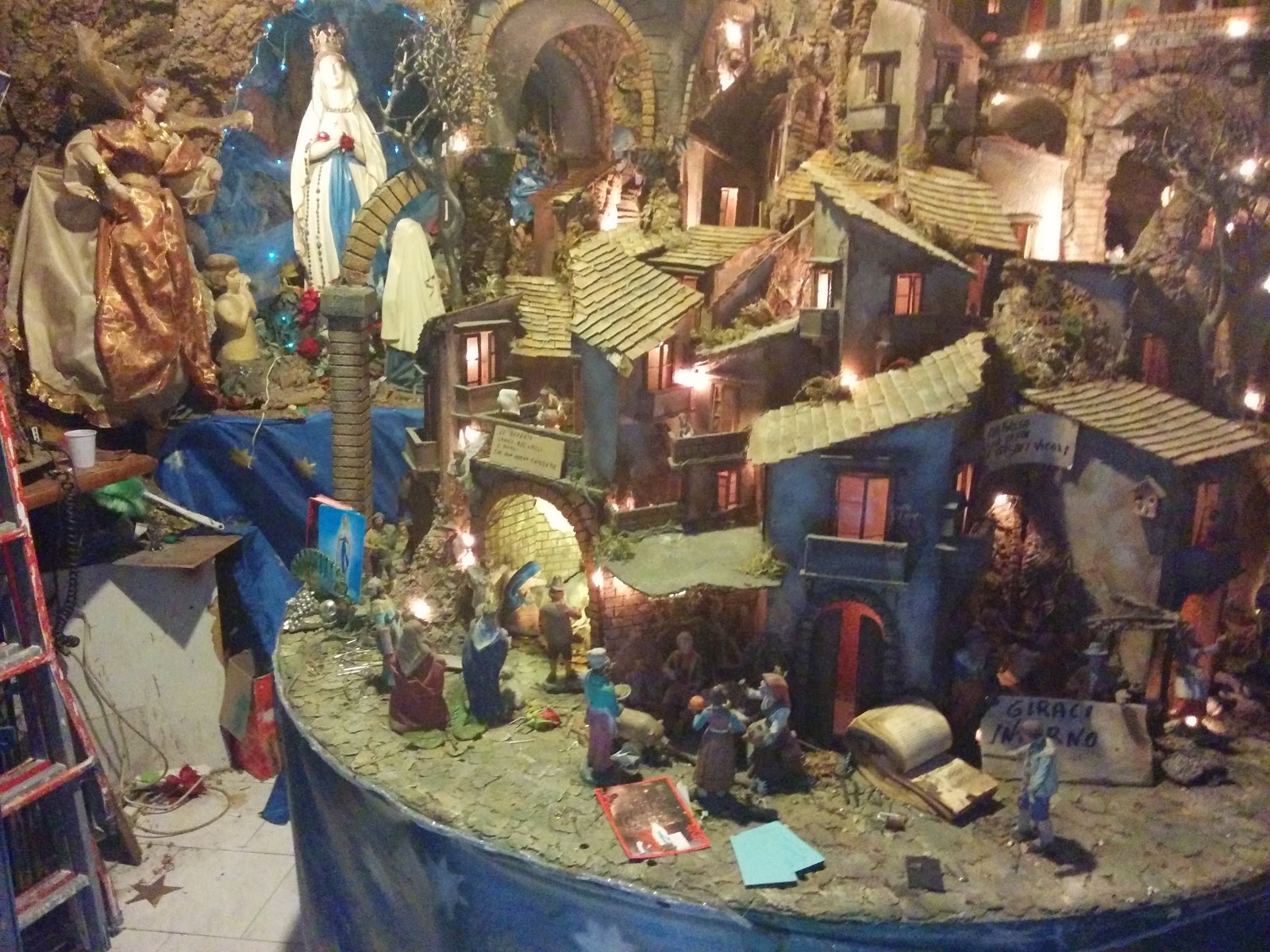 |
| More wine! More song! Painting from Paestum |
Thursday, we went south to Paestum, the remains of an early Greek city - the Greeks were the first urban-dwellers in Italy, hiving off colonies as their cities grew too big to stay home. Eventually they were occupied and replaced by the Lucanians, who were overrun by the Romans, who left their mark in the expansive Forum and an amphitheater, among other buildings now reduced to foundations - the surviving temple buildings are Greek.
Paestum (says Julianne) was the first Greek city on the Italian peninsula and has three stunning Greek temples still standing much intact. The settlers were from Euboea. A Roman stadium, the Roman road and the floors and foundations of living areas remain in the mix at the site. Great museum too, with enough of the prehistory to identify human occupation back to the earliest days--Achulean hand axes up to copper blades before the Greeks arrived with their grape vines and incredible pottery.
My desire (says Nancy) was to sit in the sun and paint. I didn't do as much walking around and studying the remains as Julianne and Donna did, but tramped directly to the large temple of Neptune, and puzzled how to indicate its immense size when my paper is only 6x12 inches. Isn't that often the problem with painting? The world is so big, my imagery is so small.
Finally I sat on some stone remains in front of the temple and painted what I saw gazing neither up nor down, but horizontally to the horizon. Here it is, imperfect but addressing the question:
 |
| Paestum, two temples. Hera on the left, Neptune on the right. |
Donna came by and told me I was sitting on the sacrificial altar, where the priests killed animals for all to see. So then I looked around, and took pictures of the whole temple.
 |
| Temple of Neptune from a distance, Hera beyond |
 |
Julianne's picture of me painting.
I'm the speck in the lower right.
That temple is big. |
Notice the temple elements in the picture above. Up under the eaves are flat areas separated by vertical elements in threes. Those verticals are called triglyphs while the carved pictures that were between them are metopes. The metopes are missing of course, but a few from the temple of Hera were preserved and found their way into the museum. Wikipedia says: "The oldest [ever found] are the metopes of Heraion at the mouth of the Sele at Poseidonia, preserved at the National Archaeological Museum of Paestum." Archaic language. Heraion = temple of Hera. Poseidonia is the earlier Greek name for Paestum, which is the Roman name. Sele is the local river. The metopes are from 500 BCE, 2500 years ago.
 |
| Metope from the Temple of Hera |
 |
| Prancing lion from a tomb painting |
 |
Life-size marble head found in Temple of Neptune.
Museum speculates the body was plaster,
and disintegrated over time. |
 |
Aphrodite dancing on a jar. Winged figures
and fanciful plant forms. |
Having looked through the museum, I have to say we liked the art of Paestum. Lots of paintings on the stone faces of the tombs and the caskets inside the tombs, lots of pottery. The citizens of Paestum lived their lives in decorative surroundings.
Having been driven around, upon return to Naples we had enough energy to walk around central Naples and watch the sunset with beverages in hand. You can still get wine made from the Greek grape variety--Turco di Graeca-which is grown on the upper slopes east of Paestum. Wine report--delicious.
 |
| Castel dell'Ovo from the bar of the Intercontinental |
Pizza at 50 Kalo for dinner. Yes--Naples is justly famous for pizza. Yes--thick crust. This restaurant is part of the Italian movement to celebrate local products and slow food excellence. In a city of excellent pizza, when we left people were lined up outside the door. Luckily, we have the American habit of eating early and got in as the place opened, at 7:30.
See pictures of our pizza at 50 Kalo in Julianne's post about pizza in Naples.
Then home by taxi and fall into bed looking for tomorrow and Campi Fleigre.
By Nancy and Julianne

















































